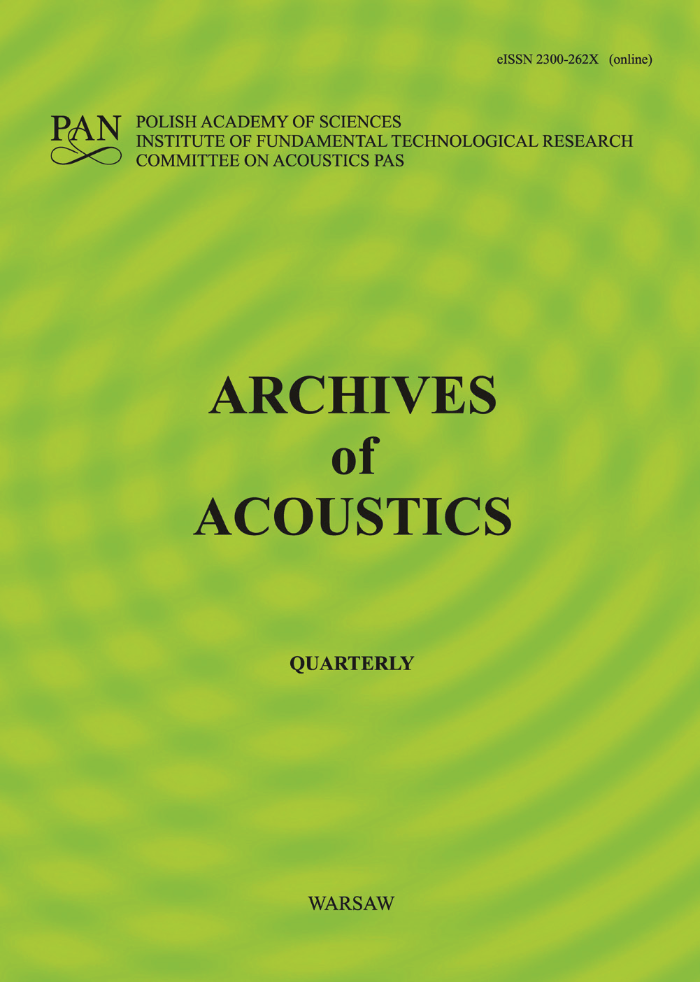Other articles by the same author(s)
- Magdalena IGRAS-CYBULSKA, Daria HEMMERLING, Mariusz ZIÓŁKO, Wojciech DATKA, Ewa STOGOWSKA, Michał KUCHARSKI, Rafał RZEPKA, Bartosz ZIÓŁKO, Speech Analysis as a Tool for Detection and Monitoring of Medical Conditions: A review , Archives of Acoustics: Vol. 48 No. 3 (2023)
- Magdalena IGRAS, Bartosz ZIÓŁKO, Detection of Sentence Boundaries in Polish Based on Acoustic Cues , Archives of Acoustics: Vol. 41 No. 2 (2016)
- Mikolaj KUNDEGORSKI, Philip J.B. JACKSON, Bartosz ZIÓŁKO, Two-Microphone Dereverberation for Automatic Speech Recognition of Polish , Archives of Acoustics: Vol. 39 No. 3 (2014)
- Bartłomiej MIGA, Bartosz ZIÓŁKO, Real-Time Acoustic Phenomena Modelling for Computer Games Audio Engine , Archives of Acoustics: Vol. 40 No. 2 (2015)
- Mariusz ZIÓŁKO, Determination of circular membrane parameters from its resonance frequencies , Archives of Acoustics: Vol. 13 No. 1-2 (1988)


